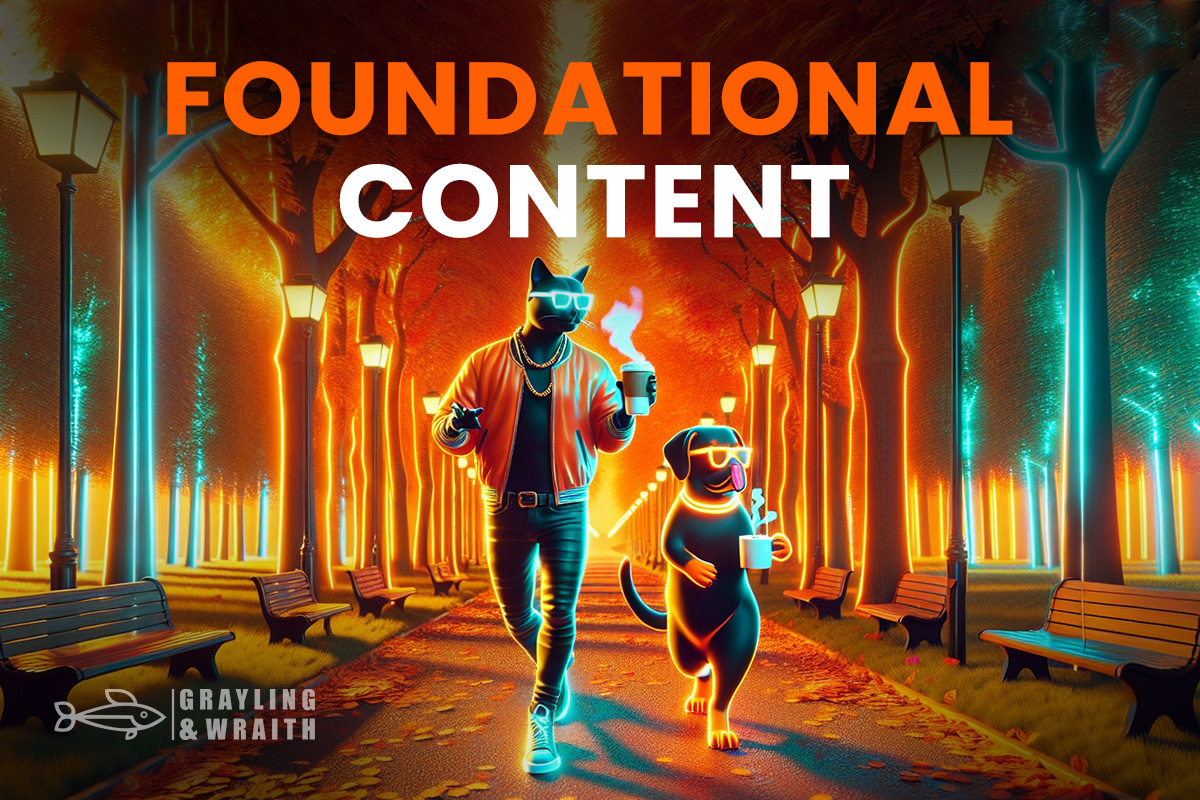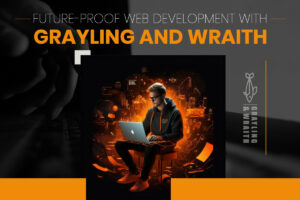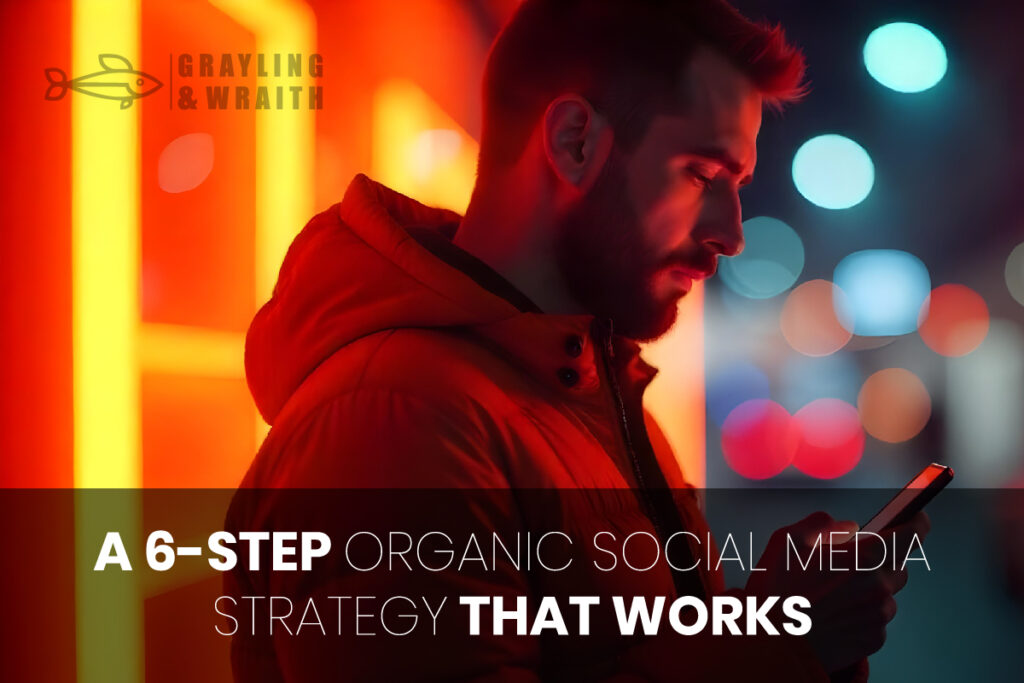In today’s digital landscape, trust is currency. Foundational content is more than just a buzzword—it’s the basis of a thriving online presence. At Grayling and Wraith, we understand that foundational content can transform your website from merely informative to genuinely trusted. This article will explain foundational content, why it matters, and how to craft content that resonates with your audience and builds trust, ensuring a deeper and more lasting connection.
Understanding Foundational Content
The backbone of your website lies in the core materials that inform new visitors about who you are, what you do, and how you can help them. At Grayling and Wraith, we believe this type of content never ages—it’s evergreen, always relevant, and speaks directly to your brand’s mission.
To build audience trust, your core content must answer key questions clearly and directly, setting a solid groundwork for all other materials. This includes your About Page, Product or Service Pages, and FAQ sections—elements that provide a consistent and trustworthy narrative about your brand.
Without a solid foundation, you risk leaving your audience with more questions than answers. So, how do you create materials that build trust, attract readers, and ultimately convert them into loyal followers? Let’s break it down in the sections that follow.
The Importance of Foundational Content for Audience Trust
Your foundational materials act as a gateway to your brand. They’re what audiences turn to when they want to know who you are and why they should engage with your business. At Grayling and Wraith, we know that if these materials are weak or inconsistent, the chance of converting visitors into loyal followers diminishes.
To effectively build audience trust, foundational content needs to:
- Establish credibility: Position your brand as a reliable source of information.
- Answer audience questions: Address common queries and concerns your audience may have.
- Provide a sense of reliability and authority: Showcase your expertise and experience in the industry.
The benefits of foundational content extend beyond mere search engine optimization (SEO). It gives potential customers a reason to return to your website, engage with your content, and feel confident in what you provide. This content also serves as a foundation for creating more specific, engaging material that builds upon your established credibility.
Crafting Foundational Content: A Step-by-Step Guide
Creating foundational content involves more than just putting together a few static pages. It’s about carefully considering what your audience needs to hear to trust you and ultimately buy into your brand. Here’s how Grayling and Wraith recommend doing it step by step:
Identifying Your Audience’s Needs
Your foundational content should address the pain points of your target audience. To do this effectively, gather insights into their needs, challenges, and preferences. Use surveys, customer feedback, and keyword research to identify what questions your audience wants answered.
Once you understand your audience, you can craft content that directly responds to their needs, leading to greater engagement and trust.
Researching Audience Pain Points
Research is key to understanding your audience’s true needs. You can identify common issues and frequently asked questions by researching forums, social media, and industry-related groups. This will allow you to craft foundational content that positions your brand as a solution provider.
Address these pain points early in your content. This immediate recognition can be the difference between gaining and losing a potential customer.

What Makes Foundational Content Stand Out?
Foundational content isn’t just about answering questions—it’s about doing so in a way that reinforces your authority and expertise. At Grayling and Wraith, we believe these are the essential characteristics that make foundational content stand out:
Relevance and Timelessness
Foundational content must be evergreen. It should stay relevant for as long as possible, providing value even as industry trends shift. This ensures that your content remains a resource for readers today, tomorrow, and beyond.
Crafting Evergreen Content
Evergreen content is content that never goes out of style. To achieve this, focus on broad yet meaningful topics, such as guides or how-tos that address key industry challenges. Update these pieces regularly to keep them accurate, but ensure that most content maintains relevance.
Another effective strategy is to use foundational content to introduce terms and ideas that educate your audience. This positions you as an expert in the field while establishing a foundation of trust.
Authority and Expertise
People look to foundational content as a reliable resource. Therefore, the content you create must reflect your expertise and credibility. Including data, research, testimonials, and any applicable certifications helps solidify the authority of your foundational content.
Leveraging Expert Insights
Including insights from recognized experts in your field can add considerable authority to your foundational content. Quotes, interviews, or even just referencing studies or whitepapers from trusted sources can enhance the reliability of what you present to your audience.
How to Use Foundational Content to Build Audience Trust
Transparency and Clarity
Foundational content must be clear and transparent to build audience trust. This means avoiding jargon and being upfront about what your audience can expect from your brand. Content that is easy to understand and leaves no room for confusion is much more likely to earn and retain trust.
Creating a Clear Message
Make sure each piece of foundational content has a clear and specific message. Instead of cramming multiple ideas into a single page, break down your information into digestible sections, making it easier for readers to navigate and comprehend.
For example, if you’re introducing your services, each one should have its dedicated section. Providing a consistent structure helps readers understand what you’re offering and how it benefits them.

Building a Connection with Your Audience
Storytelling as a Tool for Engagement
Foundational content becomes more effective when it connects with your audience emotionally. One of the best ways to do this is through storytelling. We humanize our brand by sharing our brand’s origin story, customer success stories, or even challenges we’ve overcome at Grayling and Wraith.
Personalization and Audience-Focused Content
Another way to build trust through foundational content is to make it audience-focused. Speak directly to your audience using a tone and language they are familiar with. The more your content feels personalized, the stronger the connection.
Types of Foundational Content Every Brand Needs
About Page
The About Page is one of the most important pieces of foundational content. It tells your audience who you are and what your brand represents. At Grayling and Wraith, we ensure it highlights our mission, values, and the team behind the brand. This transparency builds credibility and fosters a connection with our readers.
Crafting an Authentic About Page
Our About Page goes beyond basic facts. Including our brand story and the motivations behind our journey makes this page more engaging. Remember, authenticity here goes a long way in establishing a trusting relationship with your audience.
Product or Service Pages
Service pages are another vital part of your foundational content. These pages explain exactly what you offer and why your audience needs it. Clarity is crucial when building audience trust—each service page should clearly communicate your product’s or service’s benefits without overly salesy language.
Addressing Audience Questions
For your product or service pages to resonate, they must address common questions and hesitations. Including an FAQ section or customer testimonials can help reassure potential customers and guide them through the buying process.
Frequently Asked Questions (FAQ) Pages
FAQ pages are foundational content that provides immediate value to readers by answering their most pressing questions. These pages save your audience time and demonstrate that you’re proactive in addressing their needs.
Structuring an Effective FAQ Page
An effective FAQ page should anticipate common concerns. Consider what your audience might wonder about your industry, products, or services, and provide clear, concise answers.
Optimizing Foundational Content for SEO
Foundational content is an ideal opportunity to improve your SEO. This evergreen content should be optimized to increase organic traffic over time.
Keyword Integration
While foundational content must be engaging and informative, it should also be optimized for search engines. At Grayling and Wraith, we use primary and secondary keyphrases naturally within the content to boost your chances of ranking well on search engines.
Keyword Placement Strategies
Place keywords in headers, meta descriptions, and throughout the body naturally. Be careful not to overuse them—keyword stuffing can harm both readability and search engine rankings.
Internal Linking
Foundational content should serve as a link hub for your site. Interlinking foundational pages with other, more specific pages on your website helps guide readers deeper into your content while improving SEO.
Linking to Relevant Resources
When linking internally, ensure the content you’re linking to is relevant to the reader’s journey. This helps maintain a logical flow and ensures your audience continues to find value in your content.

Maintaining and Updating Foundational Content
Regular Updates for Consistency
Foundational content must be regularly reviewed and updated. While the goal is for this content to be evergreen, regular updates are necessary to ensure accuracy and relevancy. Refresh statistics, update links, and adjust content to reflect industry changes.
Ensuring Consistent Messaging
Your messaging must remain consistent throughout all of your foundational content. As your brand evolves, your foundational content should also evolve, maintaining alignment with your overall brand tone and mission.
Measuring the Effectiveness of Foundational Content
Tracking the performance of your foundational content is key to understanding its impact. Use analytics to measure engagement metrics, such as time spent on the page, bounce, and conversion rates.
Making Data-Driven Adjustments
If analytics show that a foundational page isn’t performing well, analyze it to see what’s missing. It may need a clearer call to action, more structured information, or an updated design.
Conclusion: The Lasting Impact of Foundational Content
Foundational content plays an essential role in building audience trust. It establishes your authority, speaks directly to your audience’s needs, and is a reliable resource. Without it, your audience may struggle to understand your value or feel confident in choosing your brand.
At Grayling and Wraith, we know that when created thoughtfully, foundational content can be a long-lasting asset that continually draws in new readers and helps turn them into loyal customers. It’s about setting the stage for all future content while providing a reliable foundation to build meaningful connections with your audience.
To succeed, research your audience, ensure transparency in your messaging, and keep your foundational content updated. In the end, the trust you build will be worth every effort.

















